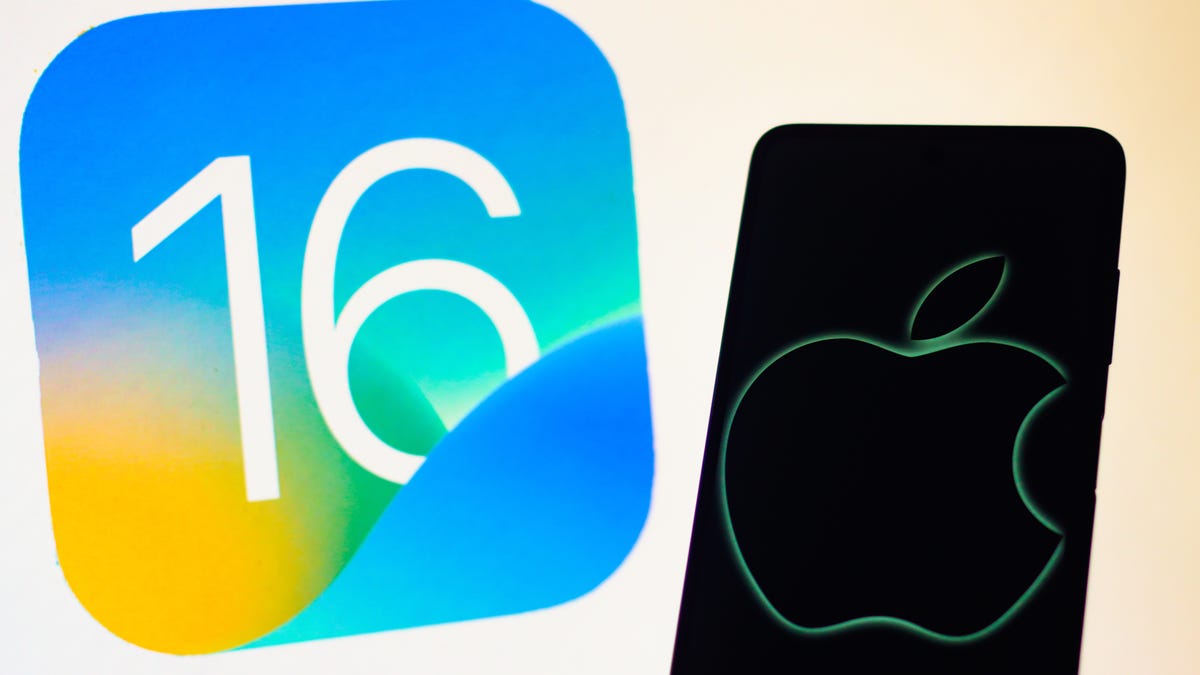Technologies
iOS 16.3: Try These New iPhone Features Now
Additional security options, new ways to use emergency SOS via satellite and more just landed on your iPhone.

Apple released iOS 16.3 in January, and the update includes some bug fixes and security updates to make your iPhone run smoother. The update also brings some useful new features to your iPhone, like security keys and an update to emergency SOS via satellite.
The iOS 16.3 update was released alongside updates for other Apple software, too, like iPadOS, Safari and previous versions of iOS. The latest iOS update arrived about a month after the release of iOS 16.2.
Here are the new features landing on your iPhone with iOS 16.3.
Security keys come to Apple ID
Users can now use third-party security keys instead of two-factor authentication for their Apple ID.
Security keys are a lot like keys to your home. You still use passwords, but this extra layer of security can help protect you against phishing scams and hackers.
«Hardware security keys are very, very secure,» Diya Jolly, chief product officer of authentication service company Okta, told CNET’s Stephen Shankland.
Apple’s security keys feature only works with FIDO Alliance-certified security keys.
Support for the second-gen HomePod
Apple’s iOS 16.3 software will support the second-generation HomePod, which is set to be released on Feb. 3 for $299 ( 299, AU$479). Apple announced the release of the new HomePod four days before the latest iOS software was made available.
New Unity wallpaper for Black History Month
The latest iOS update includes a new iPhone wallpaper as part of Apple’s Black Unity Collection. The collection celebrates Black History Month with a special-edition Apple Watch Black Unity Sport Loop, a mosaic watch face and the new iPhone wallpaper. Apple also plans to release a selection of Black History Month content for Apple TV, Fitness Plus, Music, Maps, Books, Podcasts and the App Store as part of the collection.
New ways to use Emergency SOS via satellite
Emergency SOS via satellite was introduced at Apple’s event in September. In iOS 16.3, the Call with Hold option has been replaced with Call with Hold and Release. If you enable Call with Hold and Release, you can hold the side button and a volume button to initiate a countdown and an alarm. After the countdown, you release the buttons and your iPhone will call emergency services on its own. Before with Call with Hold, pressing the side button and a volume button would first bring up the Emergency SOS call slider. If you continued to hold the buttons, a countdown started and an alarm would go off. After the countdown ended, your phone would make an emergency call.
There’s also an option to Call Quietly in Emergency SOS. By enabling this option, when you try to make an emergency SOS call, your phone won’t start flashing or making an alarm sound.
Here is the list of new features and changes included in iOS 16.3.
- New Unity wallpaper honors Black history and culture in celebration of Black History Month.
- Security Keys for Apple ID allow users to strengthen the security of their account by requiring a physical security key as part of the two factor authentication sign in process on new devices.
- Support for HomePod (second generation).
- Emergency SOS calls now require holding the side button with the up or down volume button and then releasing in order to prevent inadvertent emergency calls.
- Fixes an issue in Freeform where some drawing strokes created with Apple Pencil or your finger may not appear on shared boards.
- Addresses an issue where the wallpaper may appear black on the Lock Screen.
- Fixes an issue where horizontal lines may temporarily appear while waking up iPhone 14 Pro Max.
- Fixes an issue where the Home Lock Screen widget does not accurately display Home app status.
- Addresses an issue where Siri may not respond properly to music requests
- Resolves issues where Siri requests in CarPlay may not be understood correctly.
For more iOS 16 news, see what new features were added in iOS 16.2 and iOS 16.1. Here’s how you can sign up to test Apple’s iOS beta software, too.
Technologies
If You’re Flying for the Holidays, This Bluetooth Dongle Transforms In-Flight Movies, and It’s 35% Off for Black Friday
Watch airplane movies just like you would at home with this game-changing device.

Air travel for the holidays can be stressful, especially when winter weather or flight delays force a change of plans, but one perk of flying still remains — watching new-release movies. However, in-flight entertainment on most airlines usually requires a wired set of earbuds. (And the ones the airline hands out are so bad they may as well not even be connected.)
I’d far prefer to use my wireless, noise-canceling AirPods Pro, but they connect only via Bluetooth. There’s a simple tech solution that makes viewing movies on the plane feel more like watching them on your couch.
The AirFly is a simple Bluetooth dongle that allows me to connect my wireless earbuds directly to the airplane’s entertainment system, eliminating the need for adapters or wired workarounds.
It’s become a must-pack item in my travel bag. Since I started using it, I’ve stopped dreading in-flight audio and finally get to enjoy movies on the plane. If you fly often, this little gadget could completely change how you travel. And the base level AirFly SE is 35% off for Black Friday at Amazon.
The AirFly Pro lets me enjoy in-flight entertainment
The AirFly Pro from Twelve South is a minimally designed dongle that allows me to connect to the 3.5mm headphone jack in my airplane seat, enabling me to listen to in-flight entertainment on my noise-canceling earbuds.
All I have to do is pair the AirFly with the Bluetooth headphones I’m using, such as my AirPods Pro, plug the AirFly into the display in front of me, and I’m all set. I don’t even need to use my phone to connect the two devices.
There are several versions of the AirFly: the AirFly SE, which is currently on sale for $26 on Amazon and connects to just one set of headphones, the AirFly Pro at $55, the Pro V2 at $60 and the Pro 2 Deluxe at $70, which comes with an international headphone adapter and a suede travel case.
Hey, did you know? CNET Deals texts are free, easy and save you money.
I use the AirFly Pro, which has been a game-changer for me on flights. I’ve never had to worry about battery life since the AirFly Pro lasts for over 25 hours and can be fully charged in just three hours. I can also pair two separate pairs of headphones to a single AirFly Pro, in case I’m with someone else on a flight and want to watch the same movie or show.
And if that’s not enough, the AirFly Pro also doubles as an audio transmitter, allowing me to turn any speaker with a headphone jack, such as my old car stereo, into a Bluetooth speaker.
The AirFly Pro makes a great gift for any traveler
The AirFly Pro is the perfect present to give to someone who’s planning to travel this year. Besides my Anker MagSafe battery pack, the AirFly Pro has become my most treasured travel accessory when I fly, which is why I consider it one of those can’t-go-wrong gifts.
For more travel gear, here are our favorite tech essentials to travel with and our favorite travel pillows.
Join Our Daily Deals Text Group!
Get hand-picked deals from CNET shopping experts straight to your phone.
By signing up, you confirm you are 16+ and agree to receive recurring marketing messages at the phone number provided. Consent is not a condition of purchase. Reply STOP to unsubscribe. Msg & data rates may apply. View our Privacy Policy and Terms of Use.
Technologies
Today’s NYT Connections Hints, Answers and Help for Nov. 24, #897
Today’s Connections puzzle is kind of tough. Here are hints, answers and help for Nov. 24, #897.

Looking for the most recent Connections answers? Click here for today’s Connections hints, as well as our daily answers and hints for The New York Times Mini Crossword, Wordle, Connections: Sports Edition and Strands puzzles.
Today’s NYT Connections puzzle is kind of tough. The purple category once again wants you to find hidden words inside other words. If you need help sorting the words into groups, you’re in the right place. Read on for clues and today’s Connections answers.
The Times now has a Connections Bot, like the one for Wordle. Go there after you play to receive a numeric score and to have the program analyze your answers. Players who are registered with the Times Games section can now nerd out by following their progress, including the number of puzzles completed, win rate, number of times they nabbed a perfect score and their win streak.
Read more: Hints, Tips and Strategies to Help You Win at NYT Connections Every Time
Hints for today’s Connections groups
Here are four hints for the groupings in today’s Connections puzzle, ranked from the easiest yellow group to the tough (and sometimes bizarre) purple group.
Yellow group hint: Like an air fryer.
Green group hint: In your vehicle.
Blue group hint: Take out your laptops, dump out your water.
Purple group hint: Like a rainbow.
Answers for today’s Connections groups
Yellow group: Small kitchen appliances.
Green group: Features of a car’s center console.
Blue group: Seen while going through airport security.
Purple group: Ending in colors.
Read more: Wordle Cheat Sheet: Here Are the Most Popular Letters Used in English Words
What are today’s Connections answers?
The yellow words in today’s Connections
The theme is small kitchen appliances. The four answers are blender, microwave, rice cooker and toaster.
The green words in today’s Connections
The theme is features of a car’s center console. The four answers are air conditioner, cup holder, radio and shifter.
The blue words in today’s Connections
The theme is seen while going through airport security. The four answers are bin, carry-on, metal detector and X-ray.
The purple words in today’s Connections
The theme is ending in colors. The four answers are infrared, marigold, stingray and ultraviolet.
Don’t miss any of our unbiased tech content and lab-based reviews. Add CNET as a preferred Google source.
Toughest Connections puzzles
We’ve made a note of some of the toughest Connections puzzles so far. Maybe they’ll help you see patterns in future puzzles.
#5: Included «things you can set,» such as mood, record, table and volleyball.
#4: Included «one in a dozen,» such as egg, juror, month and rose.
#3: Included «streets on screen,» such as Elm, Fear, Jump and Sesame.
#2: Included «power ___» such as nap, plant, Ranger and trip.
#1: Included «things that can run,» such as candidate, faucet, mascara and nose.
Technologies
Today’s NYT Connections: Sports Edition Hints and Answers for Nov. 24, #427
Here are hints and the answers for the NYT Connections: Sports Edition puzzle for Nov. 24, No. 427.

Looking for the most recent regular Connections answers? Click here for today’s Connections hints, as well as our daily answers and hints for The New York Times Mini Crossword, Wordle and Strands puzzles.
Music lovers, today’s Connections: Sports Edition has a fun green category for you. You’ll recognize some familiar phrases in the grid, I think. If you’re struggling with today’s puzzle but still want to solve it, read on for hints and the answers.
Connections: Sports Edition is published by The Athletic, the subscription-based sports journalism site owned by The Times. It doesn’t appear in the NYT Games app, but it does in The Athletic’s own app. Or you can play it for free online.
Read more: NYT Connections: Sports Edition Puzzle Comes Out of Beta
Hints for today’s Connections: Sports Edition groups
Here are four hints for the groupings in today’s Connections: Sports Edition puzzle, ranked from the easiest yellow group to the tough (and sometimes bizarre) purple group.
Yellow group hint: Not long pants.
Green group hint: Sing out.
Blue group hint: Gridiron guys who share a name.
Purple group hint: Like a law.
Answers for today’s Connections: Sports Edition groups
Yellow group: Types of shorts.
Green group: Popular arena/stadium songs.
Blue group: Football Drews.
Purple group: ____ rule.
Read more: Wordle Cheat Sheet: Here Are the Most Popular Letters Used in English Words
What are today’s Connections: Sports Edition answers?
The yellow words in today’s Connections
The theme is types of shorts. The four answers are basketball, bike, compression and gym.
The green words in today’s Connections
The theme is popular arena/stadium songs. The four answers are Eye of the Tiger, Jump Around, Sandstorm and Thunderstruck.
The blue words in today’s Connections
The theme is football Drews. The four answers are Bledsoe, Brees, Lock and Pearson.
The purple words in today’s Connections
The theme is ____ rule. The four answers are infield fly, mercy, tuck and unwritten.
Don’t miss any of our unbiased tech content and lab-based reviews. Add CNET as a preferred Google source.
-

 Technologies3 года ago
Technologies3 года agoTech Companies Need to Be Held Accountable for Security, Experts Say
-

 Technologies3 года ago
Technologies3 года agoBest Handheld Game Console in 2023
-

 Technologies3 года ago
Technologies3 года agoTighten Up Your VR Game With the Best Head Straps for Quest 2
-

 Technologies4 года ago
Technologies4 года agoBlack Friday 2021: The best deals on TVs, headphones, kitchenware, and more
-

 Technologies4 года ago
Technologies4 года agoVerum, Wickr and Threema: next generation secured messengers
-

 Technologies4 года ago
Technologies4 года agoGoogle to require vaccinations as Silicon Valley rethinks return-to-office policies
-

 Technologies4 года ago
Technologies4 года agoOlivia Harlan Dekker for Verum Messenger
-

 Technologies4 года ago
Technologies4 года agoiPhone 13 event: How to watch Apple’s big announcement tomorrow
